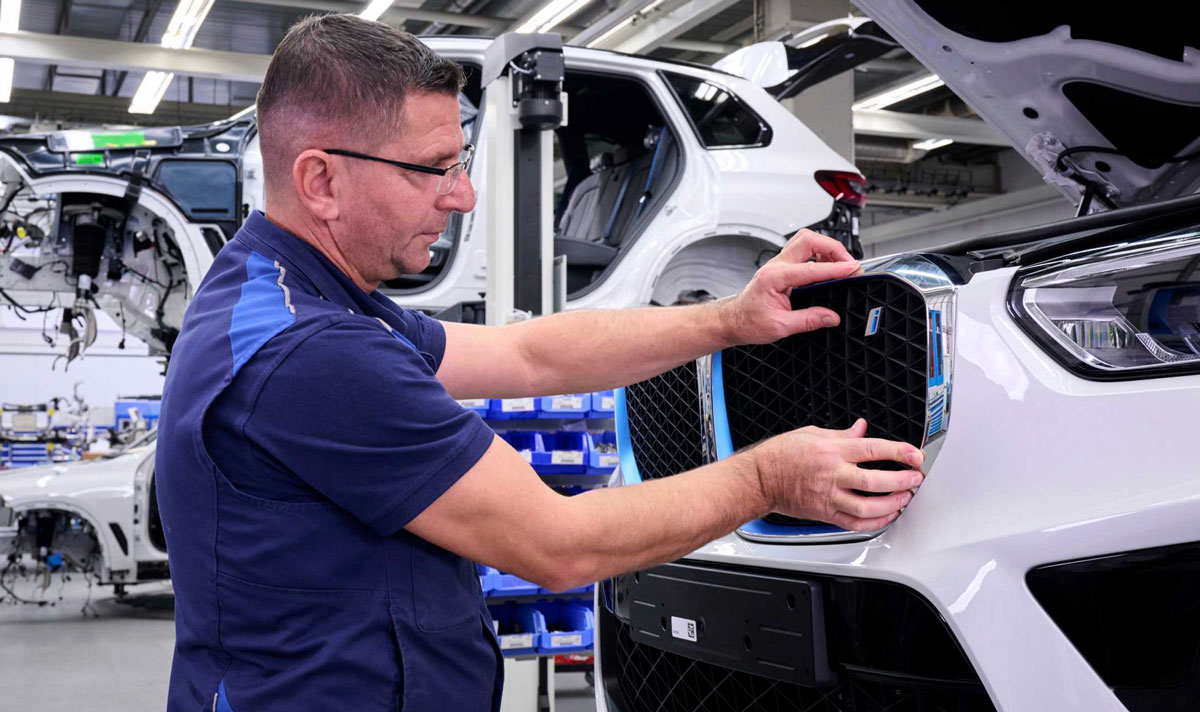The BMW Group has started producing its hydrogen car, the BMW iX5 Hydrogen. The mini-series was created at the pilot plant of the Munich Research and Innovation Center (FIZ). The first Sports Activity Vehicle (SAV) equipped with hydrogen fuel cell technology has already undergone an extensive program of testing under challenging conditions during the development phase. BMW also relies on 3D printing technology for this.
The BMW iX5 Hydrogen is built at the BMW Group’s pilot plant in the FIZ district of Munich. It is at this interface between development and production that every new BMW Group brand model is created for the first time. There are about 900 employees working in the areas of body building, assembly, prototype technology, concept car and construction additive manufacturing Works. They work on up to six vehicle projects simultaneously and ensure both the product and manufacturing process are mature enough to begin series production. In the case of the BMW iX5 Hydrogen, specialists in hydrogen technology, vehicle development and initial construction of new models work closely together to integrate innovative drive technology and energy storage.
The base vehicles of the hydrogen model developed on the basis of the BMW X5 come from the BMW Group’s US plant in Spartanburg. In the pilot plant’s body shop, they are given a new floor kit that allows two hydrogen tanks in the center tunnel and under the rear seat. In addition to standard components, the model-specific 12-volt and 400-volt electrical system, power battery, electric motor, and fuel cell are integrated during assembly. The electric motor, which is arranged together with the power battery in the rear axle area, comes from the current fifth generation of BMW e-drive technology, which is also used in BMW’s battery-powered and plug-in hybrid models. The fuel cell systems housed under the front hood of the BMW iX5 Hydrogen have been manufactured at BMW’s hydrogen efficiency center in Garching, north of Munich, since August this year.
Many components are produced exclusively for the hydrogen SAV, including the additive manufacturing complex, which is the BMW Group’s competency center at 3D printing process, which is also part of the pilot plant. The BMW iX5 Hydrogen goes through all the usual production steps from body building to painting and assembly to an individual final inspection. Each car then undergoes a comprehensive functional check at the BMW Group test site in Aschheim.
The BMW iX5 Hydrogen combines the advantages of domestically zero emissions driving with excellent suitability for both daily and long distance driving. Therefore, hydrogen fuel cell technology is an attractive complement and alternative to battery electric drives. This is especially true for customers who rely on short- and long-distance refueling stations, as well as for regions that do not yet have adequate charging infrastructure.
“By producing the BMW iX5 Hydrogen and fuel cell systems developed in-house at BMW, we also demonstrate maximum flexibility and unique production know-how in small-series production,” says Milan Nedeljkovic, Member of the BMW Management Board. BMW AG Production. “We already have the expertise to integrate another type of drive with hydrogen technology into the BMW iFACTORY production system.”
Frank Weber, Member of the Board of Management of BMW AG Development: “As a versatile energy source, hydrogen plays a key role on the path to climate neutrality. We are convinced that it will also become more important in individual mobility, and therefore consider a combination of battery electric motors and fuel cells to make sense in the long term. In addition, the fuel cell requires no critical raw materials such as cobalt, lithium or nickel, so with our investment in this type of engine we are also strengthening the BMW Group’s geopolitical flexibility.With our BMW iX5 hydrogen test fleet, we will gather new insights This will enable us to offer an attractive range of products to our customers when the hydrogen economy becomes a reality across the board.”
The article is based on a BMW press release.
Don’t miss any other news!
We deliver top news and information on the topic of 3D printing to your inbox every week for free. Register here.

“Certified tv guru. Reader. Professional writer. Avid introvert. Extreme pop culture buff.”








More Stories
Samsung Quantum Dot TV: Art meets technology
Pitch: €56m for energy startup Reverion
Plastoplan: Plastics for Energy Transition